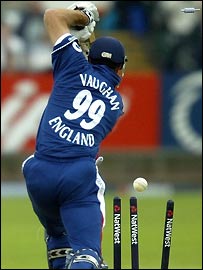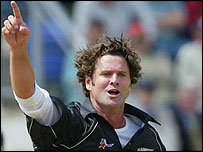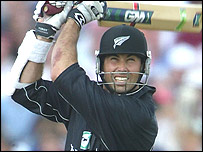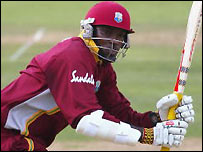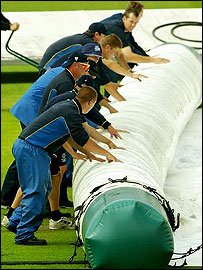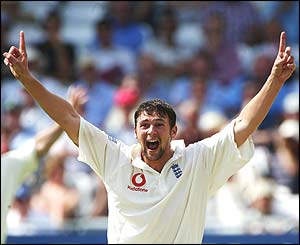David Gower: Lets now have a look at the three teams, starting with Australia.
The World Champions are expected to do well and steam roll their opponents every time they get on the cricket field. And to be honest, this is exactly what they have been doing for the past few years now. The gap between Australia and the rest of the cricketing nations is considered to be really huge and one that continues to increase day by day.
Australia havent played international cricket since February 2005, their last outing being the VB Series triangular tournament which they won pretty comfortably.
But this is the all important Ashes tour, and has a lot of pride at stake. And although the Aussies are overwhelming favourates to win their ninth consecutive Ashes, people have predicted this series to be the closest one for years.
Australia won the NatWest Series in 2001. Ricky Ponting who was a part of that Australian team, will now want to win the trophy as captain. And as always, the Aussies look as strong and invincible as ever as they begin their 2005 Ashes tour. With a lot of experience as well as youth and talent, the Aussies are clearly the team to beat.
However the World Champions havent had a very promising start to the tour, losing to England in a Twenty20 match and to Somerset in a 50 over tour match. Apart of these two, they have also played Leicestershire and PCA Masters in 50 over and Twenty 20 matches respectively, and have won both.
3 players to watch:
Matthew Hayden
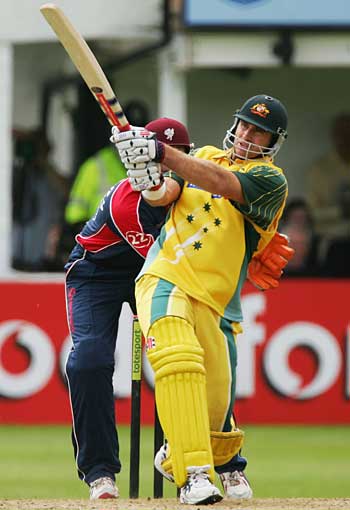
Strength is Matthew Hayden's strength - both mental and physical. It enabled him to shrug off years of carping that he was technically too limited for Test cricket because of the way he plays around his front pad, and it enabled him to touch rarefied heights of batsmanship. Before his maiden first-class innings, he asked if anyone had made 200 on debut, then went out and hit 149. The runs have not abated since. Tall, powerful and equipped with concentration befitting the triathlete, fisherman and surfer that he is, he batters the ball at and through the off side for days at a time. He has made himself reliable in the slips and gully, and is good for a relieving spell of medium-pace. His earliest Test matches were exclusively against South Africa and West Indies, a trial for any opener. They were not auspicious, but patience and willpower have since won the day, especially since the tour of India in 2000-01, where he slog-swept his way to 549 runs, an Australian record for a three-Test series. By the end of 2001 he had broken Bob Simpson's Australian record for most Test runs in a calendar year and formed a prodigiously prolific opening partnership with Justin Langer. Belatedly he came good in the one-day arena too, and by the time the 2003 World Cup rolled around he was ranked among the top three batsmen in both forms of the game. Later that year he hammered 380 against Zimbabwe at Perth, briefly borrowing the Test-record score from Brian Lara, and in mid-2004 he was at it again, battering Sri Lanka for twin centuries that took his tally to 20 in only 55 Tests. Weary through years of plunder and a difficult India tour, Hayden experienced a rare, extended slump during 2004-05 and was replaced as one-day opener by Michael Clarke.
Michael Clarke
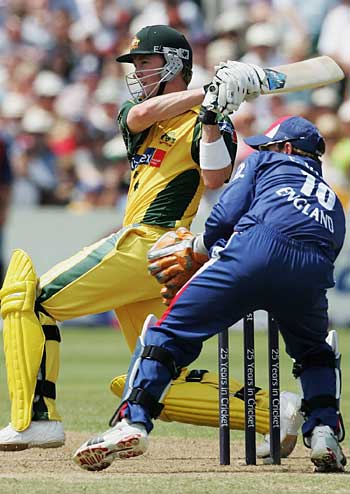
Michael Clarke already boasts a possibly unique claim to fame in Australian cricketing folklore: he was anointed as his country's next captain before he'd played a single Test. When he made his debut and a thrilling 151 against India at Bangalore his future looked even brighter than the yellow motorbike he received as Man of the Match. The amazing ride continued with another stunning century on his home welcome at the Gabba, and his first Test season ended with the Allan Border Medal. A ravishing shotmaker with an unshakeable temperament, Clarke does not so much take guard as take off. His arrival is typically the cue for a string of wristy, audacious flashes through the offside. Crowds warm to his innocent exuberance, to the buzz and energy and daredevil edge he brings to the crease. All the while he radiates a pointy-elbowed elegance reminiscent of a young Greg Chappell or Mark Waugh, who, like Clarke, waited long and uncomplainingly for a Test opening and then marked the occasion with a century. Unlike Chappell and Waugh, who learned the ropes in domestic and county cricket, Clarke has cut his teeth in Australia's one-day side. His impact in pyjamas was startling: he racked up 208 runs in four games before he was finally dismissed, and now averages in the mid-forties at a strike rate hovering around 90. His bouncy fielding adds to his run-value, while his left-arm tweakers cajole nearly a wicket a game, and dropped six surprised Indians in the second innings at Mumbai. A cricket nut since he was in nappies, Clarke honed his technique against the bowling machine at his dad's indoor centre. Affably down-to-earth, he is meticulous about his hair - which is blond and always looks freshly showered - and adores fast cars. Meeting David Beckham counts among his life's wishes. He is proudly patriotic too, wearing an Australian flag on the back of his bat, and last year signed a record-breaking A$1.25million deal with Dunlop-Slazenger. "On captaining Australia, I'd love to," he commented early in 2004. "It's another goal and something I'll have to work hard for." He worked hard for his first Test hundred, but made it look stunningly easy, and a future star became a current one
Glen McGrath
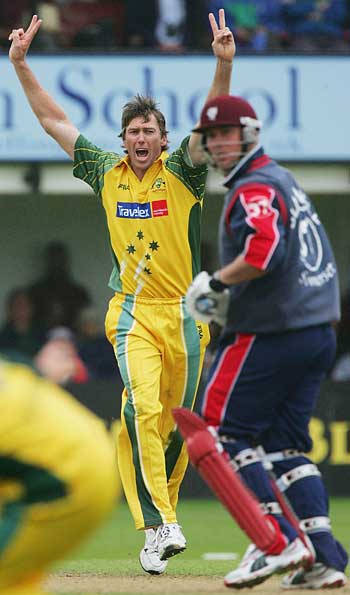
The young Glenn McGrath was described by Mike Whitney as "thin - but Ambrose-thin, not Bruce Reid-thin". Much later, Mike Atherton compared McGrath to Ambrose on a vaster scale. Catapulted from the outback of New South Wales into Test cricket to replace Merv Hughes in 1993, McGrath became, after a faltering start, the great Australian paceman of his time. He bowls an unremitting off-stump line and an immaculate length, gains offcut and bounce, specialises in the opposition's biggest wickets - especially Atherton's and Brian Lara's - is unafraid to back himself publicly in these key duels, and has shown himself to be unusually durable. He is a batting rabbit who applied himself so intently that while playing for Worcestershire he won a bet with an Australian teammate by scoring a fifty. The work eventually paid off in Tests when he made 61, the third-highest score by a No. 11, against New Zealand in 2004-05. Only in his occasional fits of ill-temper does he fail himself. He rewrote the World Cup record-books in 2003 with 7 for 15 against the outclassed Namibians, on his way to adding another winner's medal to a bulging collection. An ankle injury threatened to derail his quest for 500 Test wickets, but after briefly contemplating retirement he bounced back with yet another five-wicket haul against Sri Lanka at Darwin in July 2004. Three months later, at Nagpur, he became the first fast bowler to play 100 matches in the baggy green, and his greatness was further confirmed at Perth in December when knocking down the brittle Pakistanis with 8 for 24, the second-best figures by an Australian.
